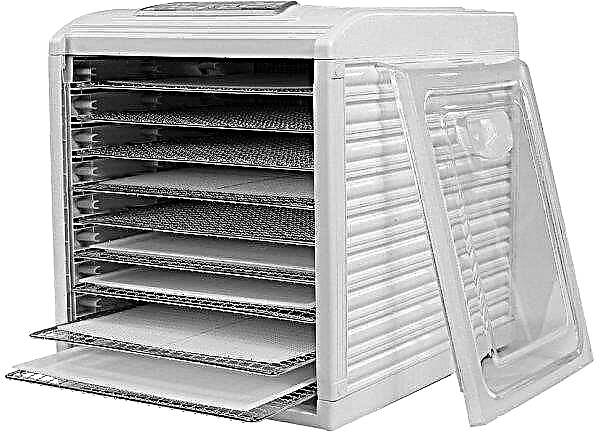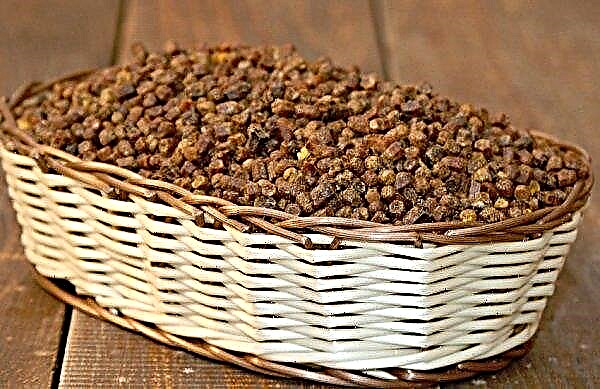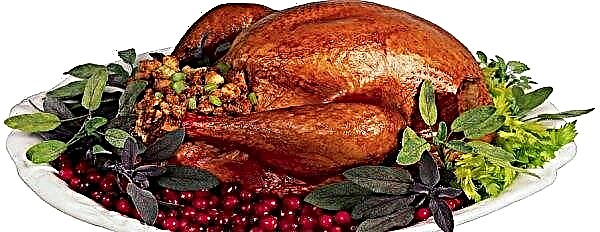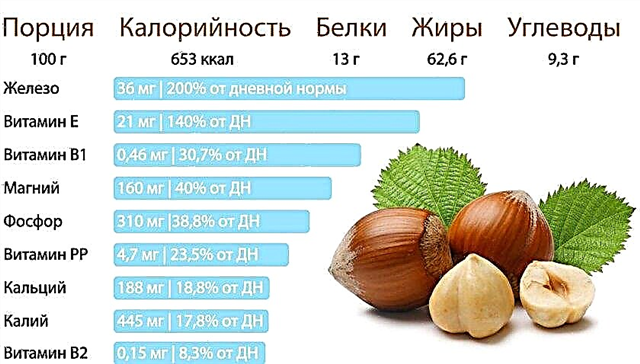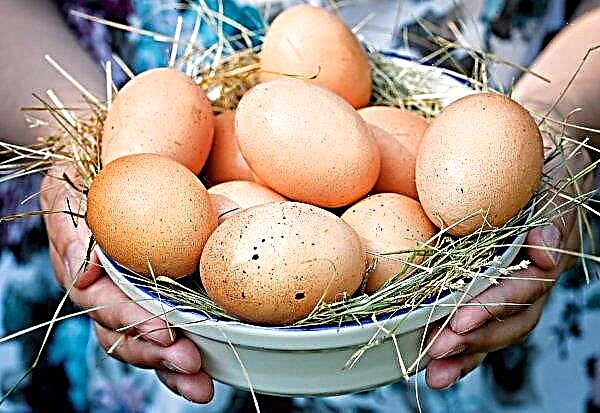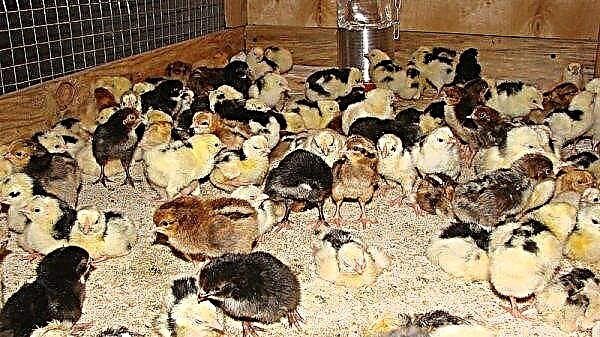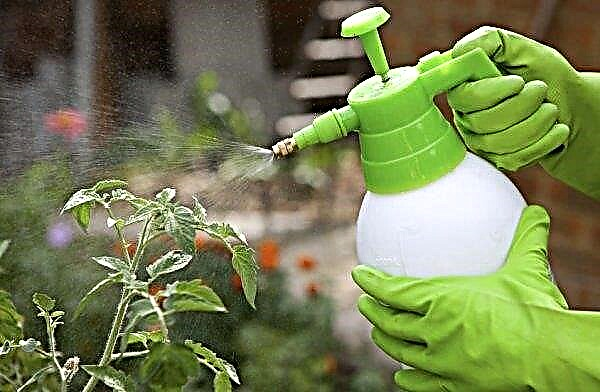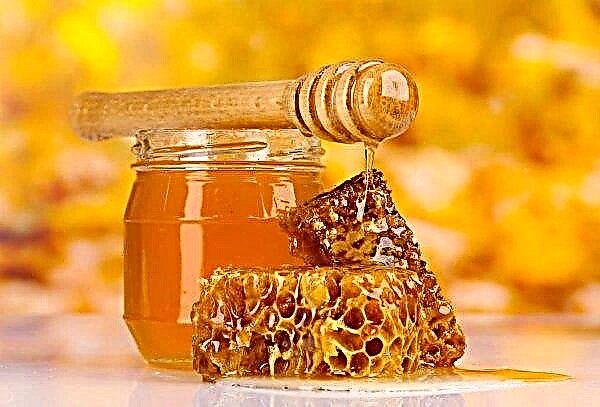Fermentation is a method of preserving food and increasing its nutritional value, known since ancient times. Turning fresh cabbage into sauerkraut is one of the simplest and most affordable methods used by housewives around the world. Such a vegetable will serve as an ideal economical preparation in the winter period for preparing first courses and salads for the winter.
Is it possible to sour young cabbage for the winter
To find out whether young cabbage is sour for the winter, you just need to understand the difference between the fermentation of early varieties of this vegetable and varieties of late harvest. White-grained varieties of autumn collection have fleshy leaves full of juice and vitamins, so when pickled they will give the usual crunch and will be stored for a long time.

At the same time, in early varieties, the leaves are thin, tender, not juicy, but watery, and after pickling they will turn out to be non-crispy. The fermentation process in young cabbage will be inferior, so it can quickly mold and deteriorate.
The conclusion is: You can ferment young cabbage at home, but it is advisable to use it as soon as possible. You should not ferment early varieties for storage in winter - they are more suitable for fresh salads.
Selection and preparation of ingredients
For pickling, you will definitely need the vegetable itself, as well as salt and sugar. Not all recipes use water, sometimes cabbage juice is enough. Also, when pickling, add carrots, apples, peppers and garlic.
Important! When leavening cabbage, shred it should be in large strips - in this case, minerals and vitamins in the vegetable are better preserved.
As flavor additives, sweet peas and bay leaves are most often used. Less often in such recipes you can find dill seeds, mustard. There are also procurement methods in which table vinegar is present.
Cabbage Sourdough Recipes
Consider several recipes for preparing crispy snacks for the winter table. They differ among themselves in both ingredients and cooking methods. This is a classic recipe for sourdough, spicy cabbage, with apples, as well as a method without the use of brine.
Classic recipe
Vegetable fermented in this way will become indispensable on any table, a tasty and healthy product and can be stored all winter.

1 can of 3 l40 min.
White cabbage
2 kg
salt
2 tbsp. spoon with a slide
peppercorns and bay leaves
optional
Energy value per 100 g:
 Wash the cabbage, chop it in the usual way: on a special grater, on the combine or with an ordinary knife.
Wash the cabbage, chop it in the usual way: on a special grater, on the combine or with an ordinary knife.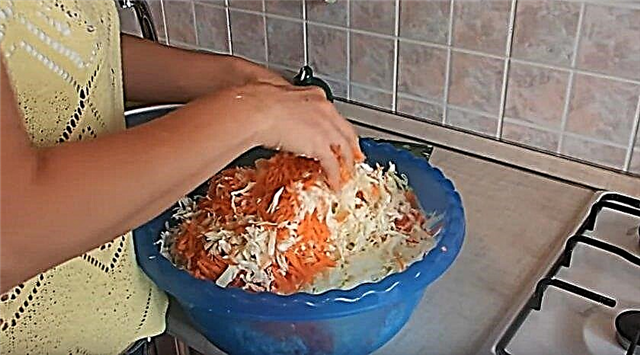 Grate carrots on a coarse grater. Place the vegetables in a voluminous basin or other container, mix gently. This recipe does not require the isolation of cabbage juice, so you do not need to mash the vegetable.
Grate carrots on a coarse grater. Place the vegetables in a voluminous basin or other container, mix gently. This recipe does not require the isolation of cabbage juice, so you do not need to mash the vegetable. Place food in a 3 liter jar. Content should not go as far as the neck. Seal vegetables in a jar is not necessary.
Place food in a 3 liter jar. Content should not go as far as the neck. Seal vegetables in a jar is not necessary.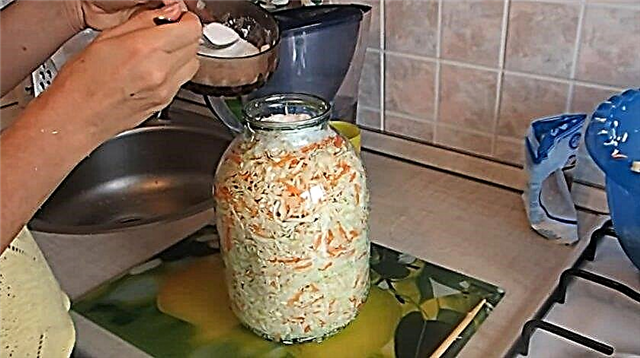 Pour salt and sugar on top of the cabbage.
Pour salt and sugar on top of the cabbage.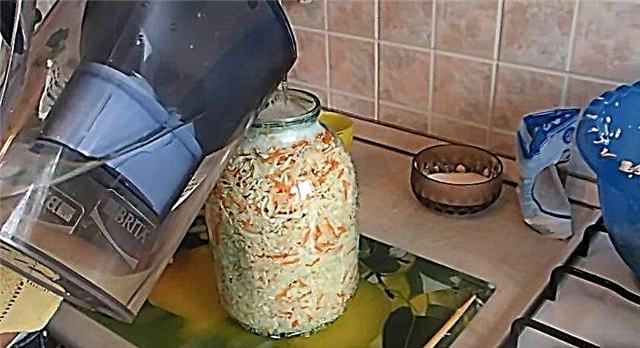 Pour the contents of the can with filtered or just cold tap water. Water must necessarily cover the entire contents of the jar.
Pour the contents of the can with filtered or just cold tap water. Water must necessarily cover the entire contents of the jar. With a long wooden skewer, pierce the cabbage several times to the bottom so that the water completely covers the entire contents. If the water is well absorbed, then it should also be added so that there is no air access to the cabbage.
With a long wooden skewer, pierce the cabbage several times to the bottom so that the water completely covers the entire contents. If the water is well absorbed, then it should also be added so that there is no air access to the cabbage.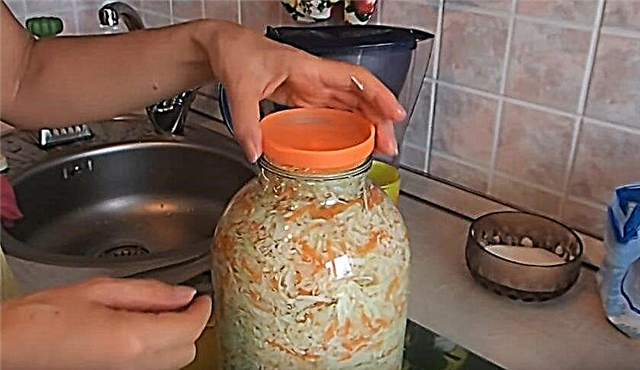 Cover the can with the back of the lid, cloth or gauze. Put the container in a bowl, because the brine in the process of ripening will rise and pour out. Leave to ferment at room temperature.
Cover the can with the back of the lid, cloth or gauze. Put the container in a bowl, because the brine in the process of ripening will rise and pour out. Leave to ferment at room temperature.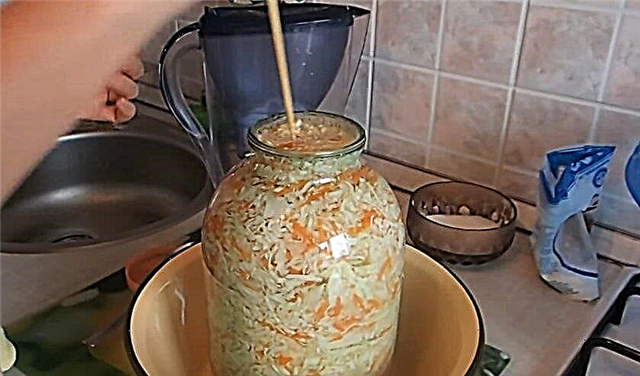 Every day for 2-3 days several times a day (3-4 times) you need to pierce the fermented product with a skewer to the bottom, so that gases and bitterness leave the vegetable. If necessary, the leaked brine from the bowl can be poured back into the jar.
Every day for 2-3 days several times a day (3-4 times) you need to pierce the fermented product with a skewer to the bottom, so that gases and bitterness leave the vegetable. If necessary, the leaked brine from the bowl can be poured back into the jar.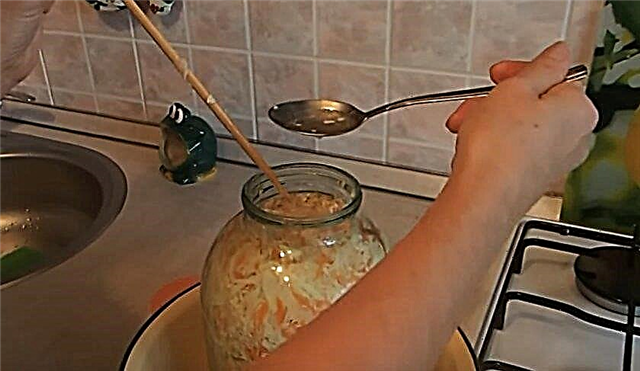 Readiness is determined by the termination of the fermentation process, i.e., cabbage juice should stop bubbling.
Readiness is determined by the termination of the fermentation process, i.e., cabbage juice should stop bubbling.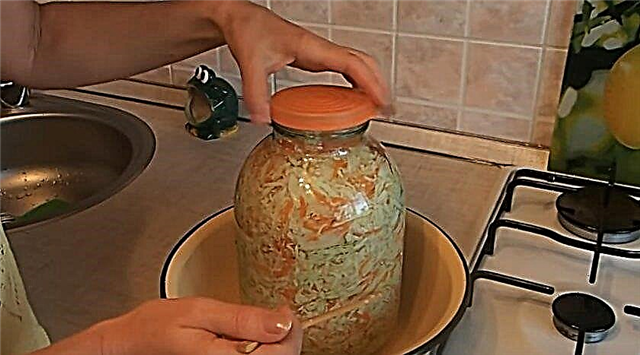 The finished product is placed in a refrigerator or in another cold place. Finally, an interesting tip: it is better to engage in fermentation on the growing moon.
The finished product is placed in a refrigerator or in another cold place. Finally, an interesting tip: it is better to engage in fermentation on the growing moon.
Video recipe
Classic recipe
Important! You should always check the recipes for the correct application of salt. At 1 kg of cabbage should be at least 30 g of salt. Its lack will affect the result.
Spicy cabbage

1 can of 3 l30 min.
White cabbage
1,5 kg
hot pepper
1-2 pcs. taste
granulated sugar
1 tbsp. the spoon
sunflower oil
2 tbsp. spoons
Energy value per 100 g:
- Wash the cabbage, chop into large pieces.
- Grind carrots, clean and peeled, on a coarse grater. If you like long chips, you can take a grater for Korean carrots.
- Cut hot peppers in circles, it is better to work with gloves. Finely chop the garlic, mix everything. If desired, the recipe can be ennobled with a small amount of dill or caraway seeds.
- For pickling you will need a jar or a barrel of wood at 3 liters. Put vegetables in a bowl. The layers need to be alternated: first lay the cabbage, then carrots, peppers, garlic, etc. to the top.
- Next, make a brine: add all liquid and dry ingredients to the water, boil.
- Pour the hot pickle into the jar or into the barrel.
- Keep 1 day at room temperature for cooling, then put the container in the refrigerator.

Did you know? Red cabbage is an excellent natural colorant. WITH her help since ancient times, painted Easter eggs in blue.
With apples

2-3 cans per 1 liter45 min.
White cabbage
1 kg
allspice, peas, bay leaf
taste
Energy value per 100 g:
- Take a tight head of late cabbage. To prepare apples, sweet and sour, sour hard varieties are best suited.
- Grind the vegetable with a thin straw.
- Coarse grated carrots. In apples, remove the seed box, cut into large slices. If you prefer small slices - do as you like.
- In a container for pickling, add all the vegetables, add the dry part of the ingredients. Grind everything with your hands so that cabbage juice appears. After 15 minutes grind again with your hands and squeeze the juice.
- Add apples to vegetables, if you wish, you can put your favorite spices, mix.
- Put the load on the workpiece and let stand for 24 hours at room temperature. The cargo may be a bag or a jar filled with water.
- During this period, pierce the cabbage a couple of times with a wooden skewer to the very bottom, so that the gases can escape. It is necessary to ensure that the brine completely covers the contents of the container.
- On the second day, the pickled product should be placed in the refrigerator or taken out to the cellar.
- You can use it after 7 days.
- For long-term storage, sauerkraut in this way can be transferred to sterilized jars and rolled up. Keep the workpiece in a cool place.

No brine

1 can of 3 l30 min.
White cabbage
2 kg
granulated sugar
1 teaspoon
Energy value per 100 g:
- For pickling, it is better to take a late-harvest vegetable. Remove the upper dense leaves, chop the head of cabbage on a special board or not too thin. Pour the shredded product into an enameled bowl or into a plastic volumetric bowl.
- Carrots should be taken dense, bright, without damage. Clean it, grate coarsely on a grater.
- Prepared pre-mix salt and mix. All vegetables must be checked for taste. If they are fresh, and this may be due to sweet carrots, then a little more salt should be added. At the request of carrots, you can take only 1 pc. If you do not like the orange color of the original product.
- Add sugar and mix again.
- Transfer all cooked products to a jar, tamp very tightly.
- It is convenient to cover the neck of the can with the lid, its reverse side, you can not close tightly. Can cover with a clean cloth. During fermentation, the vegetable will begin to secrete juice, so it is better to place the container in a basin or bowl.
- For 3 days, leave the jar at room temperature. The flowing juice must be poured into the container again so that the cabbage is always in its own juice.
- Exactly 3 days later, pierce the cabbage several times with a skewer in a jar.
- Store pickled product in the refrigerator or in the cellar.

Did you know? The largest cabbage dish was prepared on December 19, 2008 in the Macedonian city of Prilep. It was a cabbage roll that weighed 544 kg.
Storage methods
Sauerkraut can be stored in 2 ways.
Each hostess chooses the one that is convenient for her:
- Roll up in sterilized jars. Such conservation can be maintained at temperatures up to + 20 ° C.
- Store in sterilized jars under nylon covers or in a saucepan. Keep the workpieces in the refrigerator or cellar.
Cabbage is a versatile vegetable that can be used to make fresh salads, as well as pickle, steam, stew and, of course, ferment. If you make delicious sauerkraut, it will become not only a useful source of vitamins for the whole family, but also a great snack for any feast.

 Wash the cabbage, chop it in the usual way: on a special grater, on the combine or with an ordinary knife.
Wash the cabbage, chop it in the usual way: on a special grater, on the combine or with an ordinary knife. Grate carrots on a coarse grater. Place the vegetables in a voluminous basin or other container, mix gently. This recipe does not require the isolation of cabbage juice, so you do not need to mash the vegetable.
Grate carrots on a coarse grater. Place the vegetables in a voluminous basin or other container, mix gently. This recipe does not require the isolation of cabbage juice, so you do not need to mash the vegetable. Place food in a 3 liter jar. Content should not go as far as the neck. Seal vegetables in a jar is not necessary.
Place food in a 3 liter jar. Content should not go as far as the neck. Seal vegetables in a jar is not necessary. Pour salt and sugar on top of the cabbage.
Pour salt and sugar on top of the cabbage. Pour the contents of the can with filtered or just cold tap water. Water must necessarily cover the entire contents of the jar.
Pour the contents of the can with filtered or just cold tap water. Water must necessarily cover the entire contents of the jar. With a long wooden skewer, pierce the cabbage several times to the bottom so that the water completely covers the entire contents. If the water is well absorbed, then it should also be added so that there is no air access to the cabbage.
With a long wooden skewer, pierce the cabbage several times to the bottom so that the water completely covers the entire contents. If the water is well absorbed, then it should also be added so that there is no air access to the cabbage. Cover the can with the back of the lid, cloth or gauze. Put the container in a bowl, because the brine in the process of ripening will rise and pour out. Leave to ferment at room temperature.
Cover the can with the back of the lid, cloth or gauze. Put the container in a bowl, because the brine in the process of ripening will rise and pour out. Leave to ferment at room temperature. Every day for 2-3 days several times a day (3-4 times) you need to pierce the fermented product with a skewer to the bottom, so that gases and bitterness leave the vegetable. If necessary, the leaked brine from the bowl can be poured back into the jar.
Every day for 2-3 days several times a day (3-4 times) you need to pierce the fermented product with a skewer to the bottom, so that gases and bitterness leave the vegetable. If necessary, the leaked brine from the bowl can be poured back into the jar. Readiness is determined by the termination of the fermentation process, i.e., cabbage juice should stop bubbling.
Readiness is determined by the termination of the fermentation process, i.e., cabbage juice should stop bubbling. The finished product is placed in a refrigerator or in another cold place. Finally, an interesting tip: it is better to engage in fermentation on the growing moon.
The finished product is placed in a refrigerator or in another cold place. Finally, an interesting tip: it is better to engage in fermentation on the growing moon.
